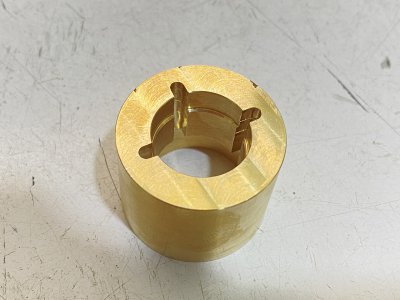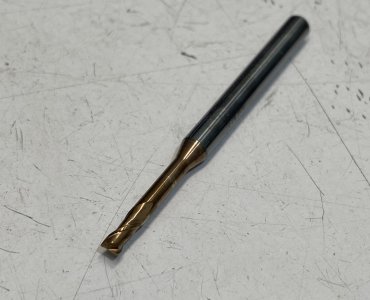I am trying to make several slots of width 2.5 mm and length 14 mm on the inner face of a brass cylinder as shown in the photo. This is not a keyway as the slot does not go all the way to the other end. I have tried to use an extended 2.5 mm carbide end mill to do the cutting in four steps with each one cutting 1/4 of the total length but I end up in having steps on one side of the slot. Function wise this is OK but I am just wondering if there are better ways to do it.




Last edited:
